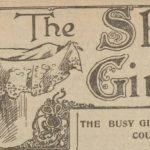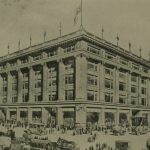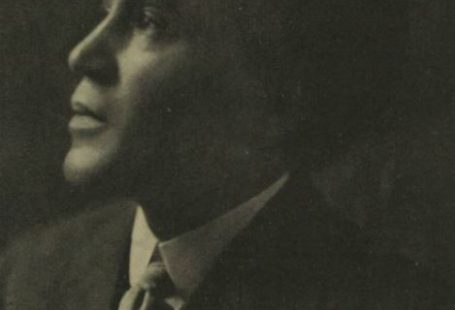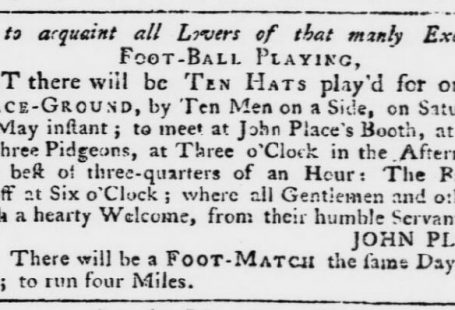We may be on the run up to Christmas now, but here at The Archive we have been as busy as ever, adding 140,040 brand new newspaper pages over the past seven days, with the addition of eight brand new titles from the Republic of Ireland and Northern Ireland over the last week. Meanwhile, we have updated fifteen of our existing titles, including updates to some of our recently added titles too.
So read on to discover more about all of our new titles of the week, and to discover which of our titles we have updated. Meanwhile, you can find out more about how Christmas was traditionally celebrated in Ireland, with the help of our newly added Irish titles.
Register now and explore the Archive
First up on our tour through the Emerald Isle is the Cork Weekly News, which was first published in the city of Cork on 2 June 1883. Politically neutral, the Cork Weekly News appeared every Saturday at the cost of one penny, circulating ‘most extensively through all the nobility, gentry, landed proprietors, and mercantile classes in the city of and county of Cork, and generally through the counties of Kerry, Limerick, Waterford, and Tipperary; and partially in other parts of Ireland.’
Printed and published by James Bleakley, the first edition of the Cork Weekly News hoped that the newspaper would be soon ‘found in the hands of at least twenty thousand readers,’ these readers being assured that they would find in its ‘pages a record of every event that has transpired both at home and abroad.’

Meanwhile, the Cork Weekly News had a particular focus on rural matters, featuring ‘carefully prepared information on all matters of interest to the agriculturalist and the dairy farmers.’ Additionally, ‘directions as to gardens’ would also find a place within the newspaper. And to this end, you can find in the Cork Weekly News articles covering turnip cultivation, feed for ewes, the management of milch cows, and a look at gardens on a farm.
Filling eight pages, the Cork Weekly News also contained poetry and short stories, and news from the surrounding area. The newspaper also promised to ‘steadily eschew all questions likely to evoke political or polemical controversy,’ pledging to devote its columns to ‘the development of Ireland’s agricultural, manufacturing and mineral resources.’
From Cork to Clonmel, the county town of Tipperary, now, and the County Tipperary Independent and Tipperary Free Press, which was founded in 1882 and circulated in the counties of Tipperary, Limerick, Kilkenny and Waterford. Again neutral in its politics, the County Tipperary Independent was one of many newspapers to appear in Tipperary at the time, and it was edited by one William G. Fisher.

Appearing every Saturday at the cost of two pence the County Tipperary Independent contained a slew of local news from Clonmel and the neighbouring county of Waterford. For example within its pages you can find shipping intelligence for Waterford, news on the Waterford Harbour Board, the latest from the Waterford Land Court, the Waterford Police Court and the Waterford City Petty Sessions. Meanwhile, the latest was also reported from Dungarvan, Carrick-on-Suir, Clonmel, and Tramore.
The County Tipperary Independent contained letters to the editor, poetry, and serialized stories such as ‘The Wrong Man – A Tale of Coercion.’ The newspaper ended its publication run in 1907.
It’s to the Irish capital we go now for our next new title, which is the Dublin Weekly News. Circulating in ‘Dublin and in all parts of Ireland, England and Scotland,’ the Dublin Weekly News was fervently nationalistic and appeared every Saturday at the cost of two pence halfpenny.
Describing itself as featuring ‘News for the Toiling Masses,’ as well as being a ‘Cheap Newspaper for the People,’ and for ‘the Artisans and Small Farmers of Ireland,’ the Dublin Weekly News set out to counteract the ‘London Gutter Literature’ of the period. In its first edition, which was published on 4 August 1860, the editorial described how the Weekly News:
…enters upon the mission of supplying with healthy Irish and Catholic intelligence the homes of our hard-working, industrious classes, now being flooded with the cheap infidel ‘gutter-literature’ of London.

In the Dublin Weekly News’s mind, it was quite literally war, as it strove to establish a sphere of journalism unique to Ireland, not wanting to become ‘another shire to the area of British journalism.’ So what did this campaigning newspaper feature? Well, it looked at the general news of the week, as well as news from abroad, from the likes of Naples, Rome, France, Austria, Syria and Russia, the latest from parliament, and Catholic news, with a look at the opening of new Catholic churches and reports from diocesan seminaries. The Dublin Weekly News also featured notices of births, marriages and deaths, as well as the latest from the assizes.
With the people of Ireland again in mind we turn to our next new title of the week, namely the Kerry People, which was first published in Tralee on 27 September 1902 at the cost of one penny. The Kerry People, and its sister paper the Kerry Evening Star, were both founded by Maurice P. Ryle, an important figure in Irish newspaper history. Ryle also owned the Kerry News, becoming editor of the Evening Herald and deputy editor of the Irish Independent.
But what plans did Ryle have for the Kerry People, which appeared every Saturday? Its first edition described how:
We have no hesitation in declaring at the outside that the ‘Kerry People’ and the ‘Kerry Evening Star’ shall be Catholic and Nationalist…To win for Ireland a National Government responsible to the people is a high and holy object; and our humble services shall be at the disposal of every man who labours honestly and honourably to extirpate the present system of misrule which has been worked in the interests of the selfish few, and to replace it by a benign and kindly rule which makes for the happiness and prosperity of the many.

The Kerry People, therefore, had a clear mission, and featured over its ten pages local news from Tralee, including the latest from the Tralee Petty Sessions, and from the Tralee Coursing Club. By the time of the Irish Civil War (1922-1923), the Kerry People was the only local newspaper published in the area, and author Tom Doyle describes in his book The Civil War in Kerry how the newspaper provided ‘accurate and balanced coverage of the conflict.’
Another Irish Nationalist newspaper added to The Archive this week is the Western People, which was established in 1883 with the stirring by-line of ‘The West’s Awake,’ its masthead adorned with shamrocks. Published in the County Mayo town of Ballina, the Western People described itself as the ‘County Paper of Mayo,’ being the ‘most representative and popular journal in Mayo,’ having ‘extensive circulation through that large county and the borders of the neighbouring counties of Sligo, Roscommon, and Galway.’
A ‘popular local organ,’ therefore, the Western People was famed for advocating ‘sound National principles,’ fully reporting on all National League meetings. The Irish National League was founded a year before by Charles Stewart Parnell, before merging in 1900 with the United Irish League and Irish National Federation.

Meanwhile, the Western People featured local news, such as the latest from the Ballina Board of Guardians, the Ballina Town Court and the Ballina Petty Sessions, as well as reporting on the doings of the Swinford Amateur Dramatic Club, and the local Gaelic Athletic Association. Also contained within its four pages were more scholarly articles, such as look at ‘The National Press: Its Growth and Influence.’ The Western People continues to be published, in tabloid form, to this day.
Our next new title of the week is the Irish Weekly and Ulster Examiner, which described itself as ‘The Leading Nationalist Weekly Journal in Ulster,’ with the largest circulation. First published on 22 August 1891 as the Irish Weekly News, on 3 September 1892 the nationalist publication changed its title, addressing its readers as follows:
This journal was called into existence through the stern necessities of the crisis in which all Ireland was plunged. It was called forth to safeguard in the North those interests of religion and country, dear to us all…It was a bold undertaking.

Published in Belfast, the Irish Weekly and Ulster Examiner claimed to have the ‘Largest Circulation of Any Irish Newspaper in Scotland and England,’ containing within its eight pages the ‘Latest, Fullest, and Most Reliable Reports from Town and Country.’ Within the pages of this newspaper, which appeared every Saturday at the cost of one penny, you could find ‘Notes of the Week,’ a ‘Poet’s Niche,’ short stories, ‘notes and queries’ relating to agriculture, and a look at ‘the music and the drama.’
Meanwhile, and true to the newspaper’s nationalist aims, the Irish Weekly and Ulster Examiner took a look at ‘the Irish Cause in Britain,’ with letters from Glasgow and Liverpool. It also looked at ‘Latter-Day Irish Literature,’ the ‘Pope and the Irish Question,’ and reported on nationalist demonstrations across Ireland.
Our penultimate new title of the week is the Lurgan Times, which was established in 1877 in Lurgan, a town on the south shore of Lough Neagh in County Armagh. Politically independent, it was the ‘only Newspaper printed and published in the great Manufacturing District,’ and it circulated in ‘Lurgan, the surrounding towns, and the counties of Armagh, Antrim, Down, Londonderry, Tyrone, and Louth.’

Reporting on the ‘local news of the town and neighbourhood,’ the Lurgan Times cost one penny and filled four pages, being printed and published by William White from the High Street, Lurgan. The newspaper featured reports on the Lurgan Billiard and Chess Club and Lurgan College Athletic Sports, as well as incorporating serialised fiction, and notices of births and deaths.
Our final new title of the week is the Ulster Echo, which was first published on 26 May 1874 in Belfast, and appeared every evening at the cost of one halfpenny. Its first edition proclaimed how the Ulster Echo was set to be:
…an independent organ of public opinion, and we come before our readers untrammelled by political antecedents or ties of party. We aim at making our journal a brief, and, so far as space will admit, a complete chronicle and abstract of the time.

The Ulster Echo, therefore, featured all the local and district news, with reports on accidents, the weather and plays showing at Belfast theatres, as well as looking at the day’s news from the police, and the most recent telegrams from abroad. It had a column dedicated to art, science and literature, as well as a ‘London Letter,’ and a look at ‘Work and Wages,’ as well as ‘Shipping Intelligence.’
That’s it from our eight new titles of the week, and highlights from our updated titles include the over 7,000 pages we have added to the Lancashire Evening Post, which cover the years 1911 to 1915. We have also added over 4,000 pages to our recent addition the Bromley & West Kent Mercury, whilst we have added over 3,000 pages to the Newark Advertiser.
An Irish Christmas
With Christmas fast approaching, we delved into the pages of our new Irish titles to discover more about traditional Irish Christmas customs, and how the festival was celebrated in Ireland in the past. It was immediately evident how important the celebration of Christmas was in Irish culture, the editorial for the Lurgan Times on Christmas Day 1880 reporting how:
Christmas is the most honoured of all festivals in this country. It is observed by every class and sect in the community with comparatively little distinction.
Meanwhile, Thomas Murphy, contributing a prize-winning essay to the Irish Weekly and Ulster Examiner on ‘Christmas Time in Rural Ireland’ in December 1909, writes how:
There is no spot on the face of this wide world where the anniversary of its Redeemer’s birth is hailed with more genuine feelings of joy and devotion than in this little island of ours.
But how was Christmas in Ireland, with all of the great importance placed upon it, celebrated? The Irish Weekly and Ulster Examiner in December 1913 tells of this Christmas custom:
In dear old Ireland Christmas is kept with every evidence of joy, for Irish Catholics are most enthusiastic in all that concerns the mysteries of our Holy Faith. One of the most beautiful customs, handed down from sire to son immemorial, is the lighting of the Christmas candle.

On Christmas Eve, when the shadows of night descend upon land and sea, the Christmas candle is brought forth and lighted, for there must be no darkness on that holy night, when the ‘Light of the World’ came to take possession of His own.
Meanwhile, Thomas Murphy took at look at how Christmas was celebrated in rural Ireland, giving this description of the lead up to the festivities:
To-night the neighbours gather to this house, the next night to that, and sitting round the bright turf fire enjoy the wit and folklore of their native land, and sing the melodies of her immortal bards. The ‘fiddle’ is always a welcome instrument, but often the bagpipes and occasionally the harp (which instrument efforts have recently been made to revive) add to entertainment. Then there are barn dances, concerts, and often the fun of threshing the corn.
Murphy is keen to separate English and Irish customs, having this message to those who would describe Irish Christmas practices as mere imitations of the English ones:
To such people I reply, ‘Perhaps you have only visited one or two of our coast towns; but if you want to know the truth go to rural Ireland and observe for yourselves during the coming festival.’

To this end, he gives an account of a conversation with a ‘County Antrim man,’ about ‘how Christmas was spent in his part of the country:’
He replied, ‘Shootin.’’
‘Shooting what?’ I queried.
‘Shootin’ for turkeys,’ he replied.
‘Is that all the sport you have?’
‘O, no; there’s an odd football match, and then there’s dancin’ an’ courtin’,’ he replied with a sly wink.
‘Anything else?’ I continued.
‘O, yes; there’s a heap o’ whusky drunk.’
Murphy is keen to gloss over the last ‘pastime,’ as he calls it, commenting how ‘the orgies which so often disgraced Christmas time in the past’ are now uncommon. Another Christmas tradition that was fading into the past, at least in Murphy’s opinion, was the celebrating of Midnight Mass, of which he gives this evocative description:
The ‘Midnight Mass’ is now a thing of the past in country places; but the time will still be in the recollection of many when once a year all Ireland at the same time had the darkness of the winter night illumed by millions of beg oak torches, as the faithful wended their way o’er hill and dale, through dark roads and boreens, to assist at the Sacrifice. The spectacle was truly picturesque.
And as for Christmas Day itself, that was ‘almost an exclusive family affair,’ with thoughts perhaps centring on absent family members and friends, as Murphy again writes:
There are few families in the country that have not absent members, some so far away that they dare not even hope for their return, some who may come, and some whose return is assured. ‘O, sure, he’ll be home for Christmas!’ is a usual reply of one neighbour to another when kind inquiries are made regarding the welfare of an absent somebody…

For many Irish families, especially in the Victorian era with so much loss, Christmas time could be especially bittersweet, as the Lurgan Times in December 1880 relates:
In many instances, the great Christian festival will awaken feelings of sorrow as well of gladness. It will arouse the recollection of friends and joys for ever gone. Not a few of our readers will experience a pang of regret for dear relations who have passed away from off the stage of time since last Christmas…
With such a rich cultural history to explore, why not dive into our Irish newspapers to uncover old traditions and customs, and attitudes to them? Start your journey into the stories of the past with The Archive today.
New Titles
Title | Years Added |
| Cork Weekly News | 1883-1904, 1906-1907, 1910-1912, 1914-1923 |
| County Tipperary Independent and Tipperary Free Press | 1882-1896 |
| Dublin Weekly News | 1860, 1865, 1870, 1875, 1879-1888 |
| Irish Weekly and Ulster Examiner | 1891-1899, 1901-1926 |
| Kerry People | 1902-1914, 1917-1922 |
| Lurgan Times | 1879-1885, 1887-1915 |
| Ulster Echo | 1874-1879, 1881-1890, 1897-1908 |
| Western People | 1889-1891, 1893-1912 |
Updated Titles
This week we have updated fifteen of our existing titles.
You can learn more about each of the titles we add to every week by clicking on their names. On each paper’s title page, you can read a FREE sample issue, learn more about our current holdings, and our plans for digitisation.
Title | Years Added |
| Bromley & West Kent Mercury | 1920, 1922-1926, 1931-1932 |
| Essex Times | 1908 |
| Folkestone Chronicle | 1860-1861, 1890 |
| Hinckley News | 1864-1866, 1872, 1876, 1878 |
| Hucknall Morning Star and Advertiser | 1891-1892, 1895-1896, 1898 |
| Lancashire Evening Post | 1911-1912, 1914-1915 |
| London & Provincial News and General Advertiser | 1862 |
| Newark Advertiser | 1862, 1864-1865, 1868-1869, 1871, 1876, 1878 |
| Peterborough Express | 1910 |
| Porthcawl Guardian | 1953 |
| Pue’s Occurrences | 1704-1706, 1714 |
| South Gloucestershire Gazette | 1918, 1921, 1923 |
| South London Journal | 1856-1857, 1893 |
| Sutton Coldfield and Erdington Mercury | 1893, 1900 |
| West Ham and South Essex Mail | 1891, 1925, 1940 |
You can keep up to date with all the latest additions by visiting the recently added page. You can even look ahead to see what we’re going to add tomorrow.






